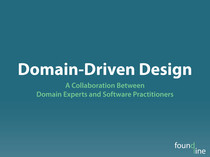The other day we launched the first iteration of the Common Good Vermont website. From the about page:
Vermont (pop. 621,000) is a small, tightly knit rural state proud of its independent spirit and high levels of civic engagement. Vermont’s independent sector (3000+ organizations, $4 billion annual revenue) plays a primary role in the delivery of human and cultural services and in the preservation of the state’s cherished natural resources. Most social services—food, shelter, healthcare and education—are delivered within local and regional community settings.
Often separated by geography (mountains, rivers, lakes), Vermont’s 251 towns and 14 counties are increasingly knit together by broadband “build-out”. Common Good Vermont leverages these electronic networks to bridge the barriers of Vermont’s geography and the “beaten paths” of its hyper-local networks. New human and electronic networking activities will support the delivery of information and innovation to the state’s community builders: project volunteers and professionals who, by virtue of their civic and nonprofit roles and responsibilities, are the lifeblood of the “green mountain state”. Common Good’s place-based and community virtual events are designed to improve the capacity of so many “small networks” that, improve Vermont’s unique “quality of life”.
Common Good Vermont aggregates content for (and from) Vermont independents and nonprofits by pulling in RSS and Atom feeds including blogs, news sources, social bookmarks, and event calendars. The goal is to serve as an information hub encouraging knowledge sharing and increasing cross-organization communication. Content is currently organized by a combination of taxonomy (categories defined by Common Good Vermont staff) and folksonomy (tags from the feeds themselves). Our goal is to eventually remove the taxonomy layer and have all content organized completely by broad and, to a lesser extent, narrow folksonomy. However, the taxonomy layer is there for now to allow a certain amount of curation while we seek out, connect, and aggregate additional sources of information.
Common Good Vermont is built using Zend Framework and hosted on Rackspace Cloud Sites. Components from Zend Framework used include its MVC system, Zend_Application, Zend_Feed_Reader, Zend_Tag_Cloud, Zend_Search_Lucene, Zend_Paginator, Zend_Db, Zend_Date, Zend_Auth, Zend_Acl, and Zend_Form. Stay tuned for future iterations to the website!




